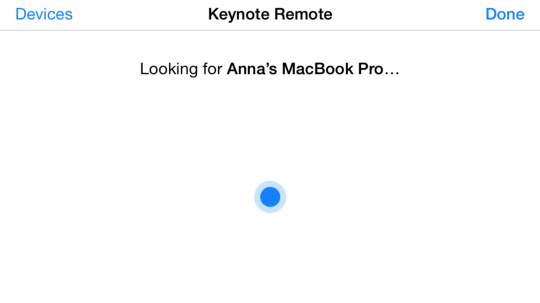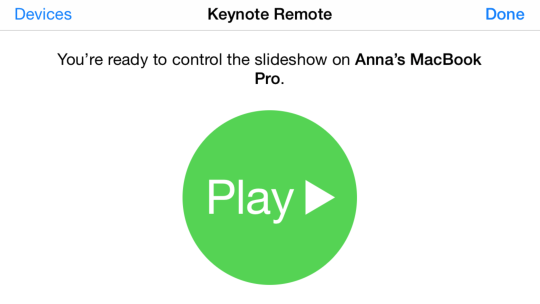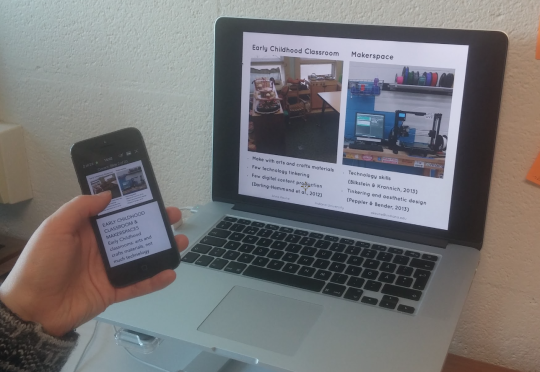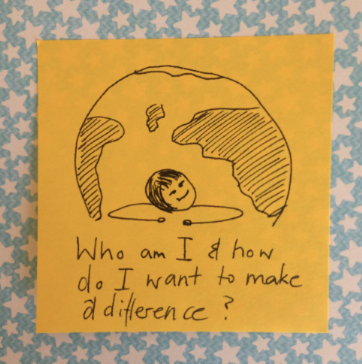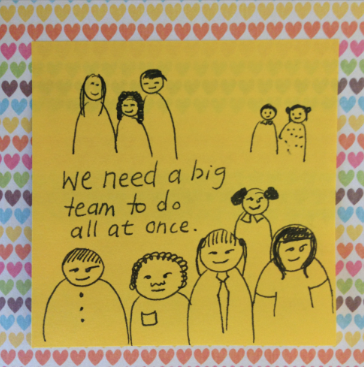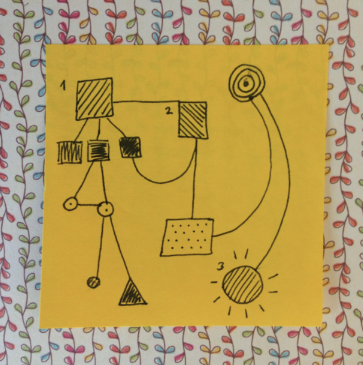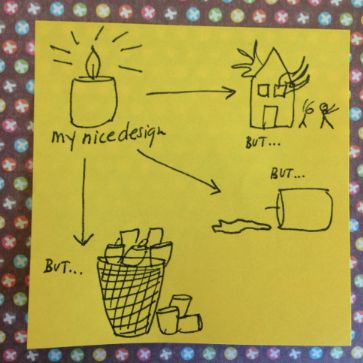April 21, 10:00am-11:00am PST (12pm CST/1pm EST)
Facilitators
- Alicia Blum-Ross, London School of Economics and Political Science
- Melissa Brough, CLRN @ DML Hub, UC Irvine
- Anna Keune, Indiana University
Invited Guests
- Julian Sefton-Green (London School of Economics)
- Nancy Erbstein (UC Davis)
We had the pleasure to co-facilitate our webinar with two special guests: Nancy Erbstein from the University of California at Davis who spoke on her work in the area of Youth Participatory Action Research (YPAR), and Julian Sefton-Green from the London School of Economics & Political Science and an independent scholar who shared his diverse experience on who research is for and why to involve people. Here are some notes on the webinar.
Nancy Erbstein got started with YPAR during her undergraduate work that related to educational reform, working with renowned researchers in the area and alongside Language Learners (L2). This is when she recognized the “disconnect between students’ experience and the discourse of the national school reform arena.” She wanted to bring the L2 youth voices to the conversation of policy planning and evaluation. Nancy’s experiences working in South Asia around nationalization of the Nepalese school curriculum with ethnic minorities also informed her YPAR work as it stands today. She developed a curriculum that was based on youth-led research and evaluation. With the creation of the youth-led research and evaluation planning curriculum, Nancy and her colleagues asked youth to research their own conditions and bring that activity to bear upon research and evaluation. A critique of the politics of knowledge production led her into this work. She also co-founded the nonprofit organization Youth In Focus to train young underrepresented people in youth-serving organizations to engage youth in Participatory Action Research (PAR), evaluation and planning.
Typically funders and academics turn to scholars who write about this work without specific focus on the people who developed this work in and with communities. Academics have come and studied and adapted this work and written about it, but in fact there is a lot of work that is done in the field that is not documented in ways that are typically recognized by academia. [We need to] acknowledge that young people were engaged in building YPAR, which is now ubiquitous in comparison to the field 20 years ago. – Nancy Erbstein
Julian Sefton-Green started with the intention of being a “proper academic,” but instead became a high-school teacher with a particular interest in media studies and media education. Training at an institution with a history of activist education he had the opportunity to work in and with schools. Julian mentioned that “at the time classroom teachers, along with heads and teacher advisors, had more influence about what happened in schools, especially in regards to assessment and curriculum.” Working with a community of practitioners developed his wish to find ways to theorize the challenges he experienced when working with a community of teachers.
The starting point for [my] academic scholarship was working with teachers and the problem of trying to understand the meanings that young people brought to the classrooms through their consumption of popular media culture and trying to find ways to credentialize and validate that and to explore that. … The point of working had direct and immediate purpose with and for that community of teachers. – Julian Sefton Green
Nancy Erbstein’s projects: increasing access to data on racial and geographic disparities in youth well-being to inform young advocates’ work
While working with young equity advocates and people in decision-making and planning environments in areas including education, public health, youth development, community development, and philanthropy, Nancy engaged three communities in California: an underinvested urban community, a large town with formerly incarcerated youth of diverse sociocultural backgrounds, and a rural area with predominantly Latino youth. Nancy partnered with organizations to design and pilot an educational curriculum for critical use of public data, digital youth well-being analyses and online GIS systems. Most of the funding for this work came from the university campus, and private foundations.
Nancy recalled that one of the main challenges of working worked with young people on YPAR that involves youth with public decision making is that “decision makers would question [the youth] on their small sample sizes. It was difficult for [the youth] to gain access to large quantitative data analysis that policy makers were using to inform their thinking.”
When advocates contacted Nancy, asking for data and requesting her to analyze and map data to use alongside the youth generated research, Nancy recognized that “public data was not accessible and even if available, looking at data in the way [the youth] wanted (e.g. spatially references, disaggregated) was not possible for them.” The questions emerged:
- How to construct geo-spatial measures of youth well-being that would rely on publicly available data, and would provide analysis of sub-county level (US) that can be made available online through a GIS platform?
- How to build youth capacity to work in an informed and critical way with such analyses?
What are the limits of policy makers in reading YPAR research?
It is difficult to know what drives policy change. Often it has little to do with research. Sometimes the one compelling story that gets everyone excited about moving a policy agenda makes the difference, other times it is the link between a piece of research and somebody’s active policy agenda or the moving train in a policy environment. If there is a good fit, there may not be so much concern about sample size. (…) Other times, when trying to raise new issues or contentious issues, people will raise questions about (…) smaller sample size or a primary emphasis on qualitative data. – Nancy Erbstein
With this in mind, Nancy encourages the use of mixed methods, and “providing large scale data sets and encouraging young people to point out the downsides of those data sets and the ways in which their research can fill an important gap and/or raise important questions.”
How do you get young people engage?
The work Nancy was involved with “tied to issues that youth were already contending with”, and did not find it challenging to get youth involved. However, sustaining involvement can be challenge, as young people often have a lot going on in their lives. Another issue could be the need for youth to find work to support their family.
As a way to counter this challenge, Nancy suggests offering stipends to young people, especially if their work was supporting the work of the institution. However, she warns that “in classrooms it can be more difficult to integrate this type of work where [youth] engagement is part of a course, but I’ve seen some remarkable successes.” One example of these success stories comes out of the Community To The Classroom project (video of an example produced by youth). Nancy experienced that “young people often want to discuss the dynamics of (…) power they are experiencing.” Here it is particularly important to support adults with the resources needed to open up lasting ways for youth to engage.
Julian Sefton-Green projects: creating videos with youth and screening them to a public facing audience & English National Project Creative Partnerships to foster collaboration among teachers and artists
While working at a youth community center, Julian was commissioned to create a video, along with youths who were living in care, which was intended to be viewed by a public facing audience. It was a positive learning experience for the youth to tell their stories, and they enjoyed creating the film. Against expectations, the screening of the film to the social services and people in local authority did not go over well. Julian recognized that it was a “complete contradiction to the way the youth wanted their story to be told and the awkward response of the people who commissioned the video.” Julian suggested that it is important not to promise the youth a quick change. In his case, young people already knew how difficult these kinds of experiences are. Julian added: “You engage them into political discourse and give them the opportunity to learn how to engage in this kind of discourse. [It is important] not to promise any outcomes, and that the work would achieve anything.”
Julian also worked with English National Project Creative Partnerships to foster collaboration among teachers and artists toward the development of learning activities for young people. The project had a large budget and varied in its outcomes and results. Julian helped “create literature reviews, because what research can contribute is histories and thinking about bodies of knowledge and ideas that have a tradition. (…) The project also created constituency of interest and the research-validated practices gave authority and weight besides the theorization.”
Research at its best creates constituencies of interest. You might not succeed in persuading people in power to invest into young people, but research creates a language and a way to organize and collect around a set of understandings that you can theorize and frame and put into shape and narrative and that can be powerful. – Julian Sefton-Green
What is the importance of theory?
Julian reframed the question, asking instead “what does contribution to academic theory mean?” For him, it means (a) publishing in journals and collecting citations, and (b) framing and explaining a particular practice to move an argument forward. Theorizing is often of greater interest. And Julian elaborated that “theory is a kind of way to explain things to people on the ground.” For him, “it comes down to how clearly one can write. (…) A lot of it comes down to how easily you can express yourself in simple, easy-to-understand language. And that is not the same thing [as the] premium of what it means [to be] an academic.”
Work-Life balance
Nancy made an explicit decision not to be in a mainstream faculty position. At institutions all of the work it takes to pursue rigorous and mutually respectful, equity-oriented, community-engaged research is considered service. So much of her work-time does not directly focus on writing peer reviewed journal articles. In a non-tenured faculty position without a regular teaching load, she has been able to allocate time for community engagement but still work with students through projects and committees. One can be successful working in this line of work while being in a tenure-track positions, but it presents unique challenges, for example, it is often not an easy fit if you want an academic appointment that carries PI status; but this is changing to some extent. Groups such as CCPH and Imagining America are working to support such scholars and scholarship in the US.
Is there a contribution that participatory and community based research can make to educational research?
Collaborative and political work has a way of engaging participants in ways that other forms of research does not. So the direct and immediate impact is there and part of your life as opposed to indirect effect. Direct collaborative community-based research can be better than other forms of research. (…) it is important to stay on the edge to avoid becoming another orthodoxy within academia. – Julian Sefton-Green
What PAR has to offer to knowledge production (is the) potential generation of new kinds of questions that might not emerge on campuses. Complex challenges that people are looking to define and solve, require multiple ways of knowing to tackle those challenges. PAR offers the opportunity to create the kinds of trans-epistemic communities that can work on these issues. – Nancy Erbstein

